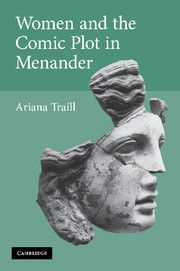Preface
Published online by Cambridge University Press: 22 September 2009
Summary
This project began as an attempt to explain the origins of the so-called bona meretrix (“good prostitute”) in Terence, but the Menandrian material proved so richly informative that it soon became a study of Menander's hetairai. It transformed into something much broader when it became clear that the mechanisms at work in the representation of hetairai applied to other female characters. The simple question “Are they good?” led to many other questions about the dramatic representation of women, women's identity, and the basic premise of mistaken identity. With roots in folk tale, tragedy, and Old Comedy, the mistaken identity plot was developed by Menander and his contemporaries into a versatile and productive comic form. Menander's plays, in particular, show how it could be adapted to all kinds of situations. This book traces some of these variations and explores the rich dialogue Menander engaged in with his literary predecessors and with the intellectual currents of his time. His comedies have not only enriched the western tradition with many of its basic plots and devices, but they also open a fascinating window into the laws, customs and social mores of late fourth-century Athens.
This book has been many years in the making. I owe special thanks to Richard Thomas, who supervised the Ph.D. thesis from which it grew, and to Cynthia Damon and James Halporn, who both read the thesis with a critical eye.
- Type
- Chapter
- Information
- Women and the Comic Plot in Menander , pp. ix - xPublisher: Cambridge University PressPrint publication year: 2008

